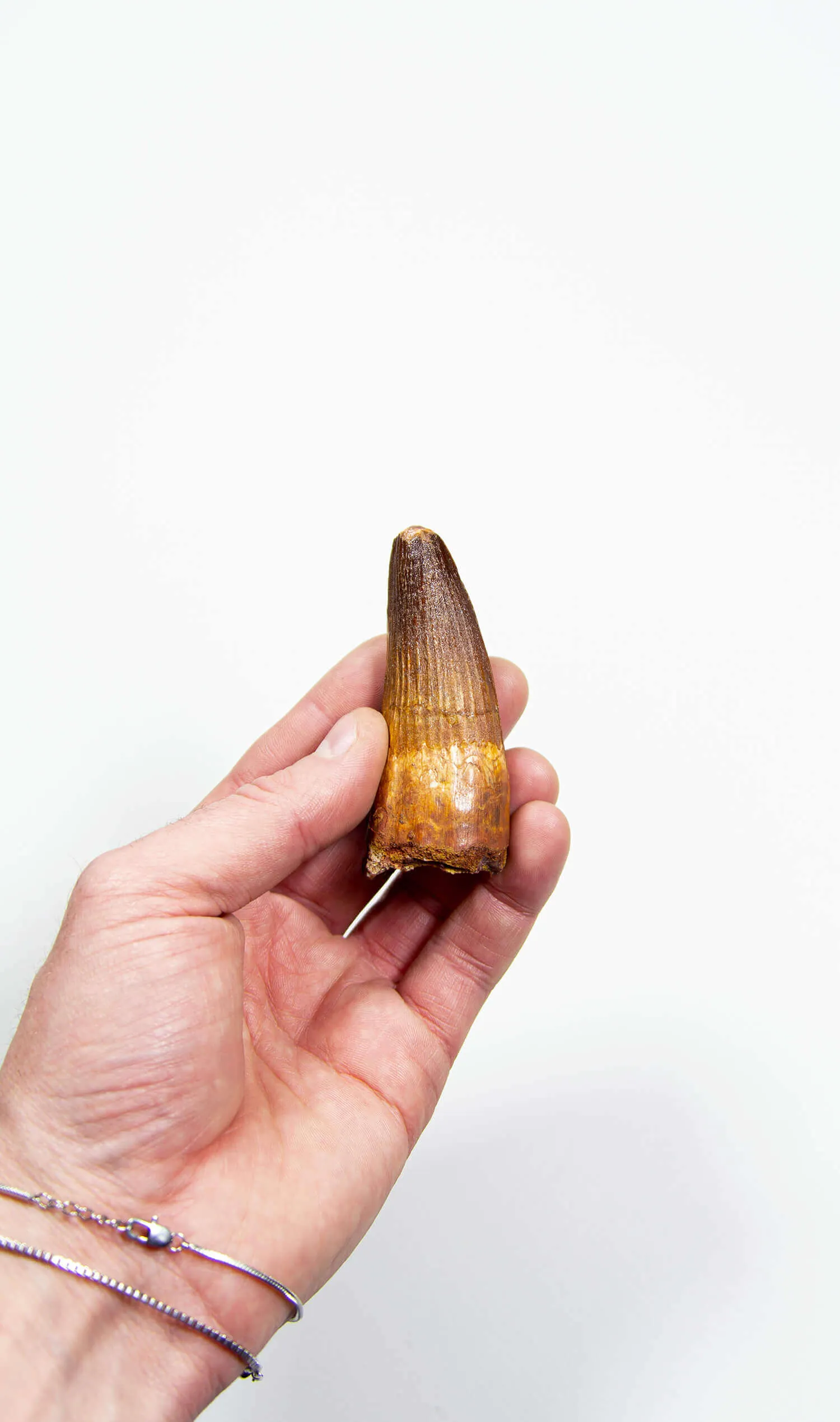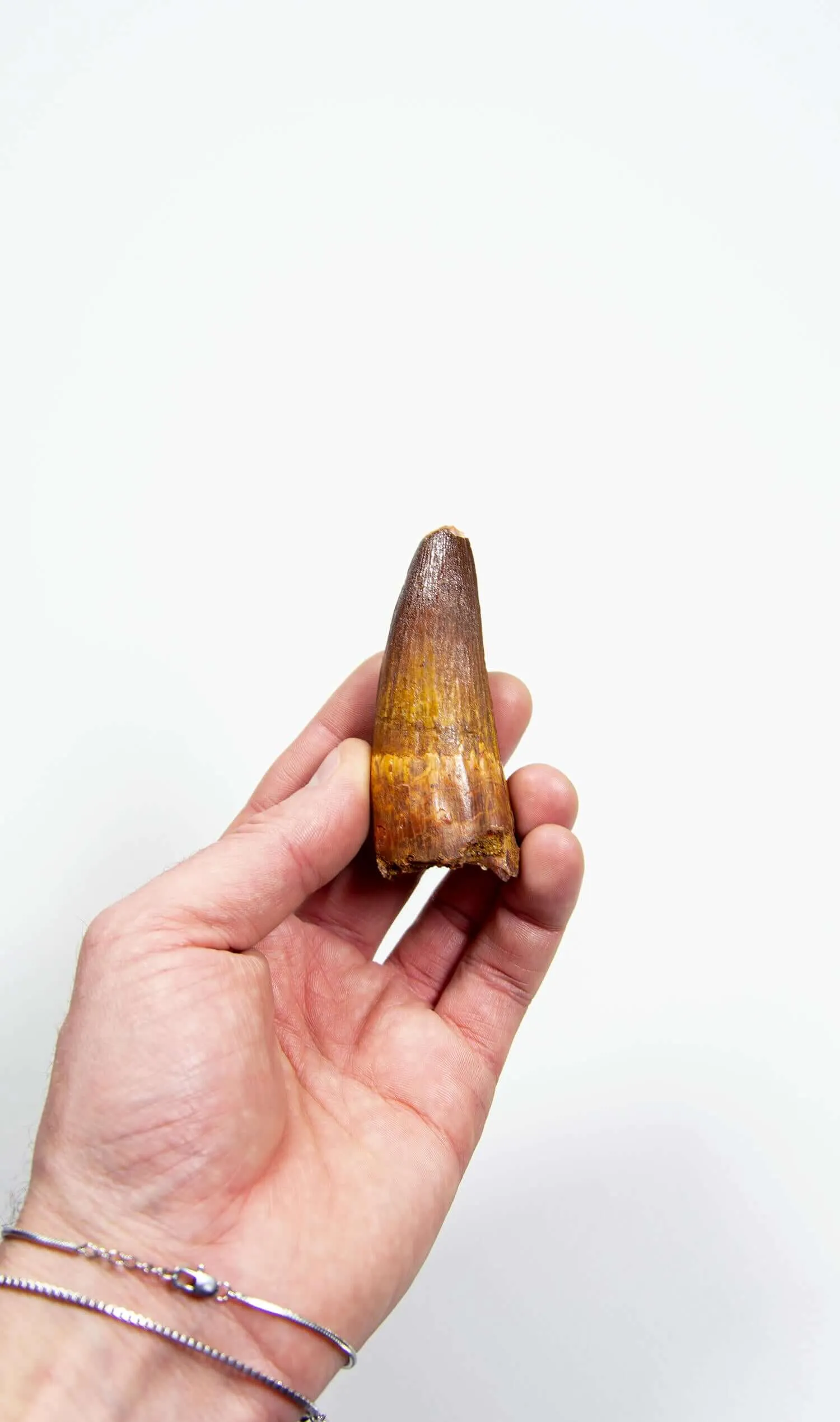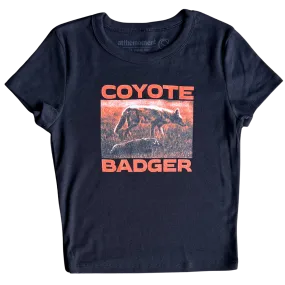DETAIL
Unearthed in the continental intercalaire, a significant 76mm Spinosaurus tooth highlights 19 million years of evolutionary prowess. Known for its sail-like dorsal fin, potent jaws, and robust killing claws, the Spinosaurus was an adept predator with specialised hunting capabilities. Its agility and intricate design surpassed similar-sized dinosaurs, making it highly successful in both aquatic and terrestrial environments. Despite its effectiveness, Spinosaurus specimens are relatively rare in discoveries, amplifying their appeal among researchers and collectors eager to delve into the mysteries of this colossal predator from the past given the relatively rare discoveries, amplifying a desirability among researchers and collectors alike.
CONDITION
A scientifically important, archetypical semi-aquatic Spinosaurus dinosaur tooth demonstrating good preservation. The Spinosaurus tooth specimen displays excellent morphologically throughout from the root to the tip. A wonderfully naturally stout and stable specimen tooth. Exhibiting a dark reddish patina throughout. The cap of the crown with life wear and a slight enamel loss. The rootstock has a fine and colourful texture, as does the dentin enamel above it. Overall, a substantial specimen. Further consolidated and stabilised in the UK Lab. Minerals and aeons of deposition in the Cretaceous fossil bed layer dictate the tonal palette. An opportunity to invest in a prestigious Spinosaurus tooth, a ferocious aquatic theropod dinosaur with powerful jaws and fearsome conically puncturing teeth that once terrorised the cretaceous waterways now known as the Western Sahara desert.
STAT
Order: Saurischia / Family: Spinosauridae.
Genus: Spinosaurus aegyptiacus, [Spine Lizard].
Size: Among largest theropods, estimated 50 to 59 ft.
Age: Late Cretaceous, 93 to 112 million years.
Habitat: Discovered in Egypt and Morocco, North Africa.
Origin: Continental Intercalaire, B. Tigri, S.E.Morocco.
Diet: Primarily piscivorous, composed of sawfish and fish.
Teeth: Characterised conical teeth suitable for grasping slippery prey.
Class: Spinosauridae family, with aquatic and terrestrial adaptations.
Physiology: Sail structure, likely thermoregulated, crocodilian jaws.
Discovery: Palaeontologist Ernst Stromer in 1912.
Extinction: End of Cretaceous, environmental changes.
CM / Mesial curve: L: 7.6 / KG: 0.061
EXPLORE
















